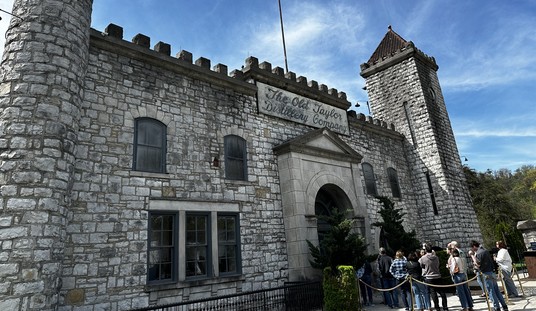Peter Jackson’s first of three Hobbit films took a thrashing from the critics, who disliked the effect produced the new 48-frames-per-second projection system. This makes everything a bit too clear, a bit too smooth, such that sets and costumes seemed artificial to some. It is off-putting at first. Halfway through the film, though, I suddenly thought, “This is the way I saw the world when I was a child!” There are many wonderful things about Jackson’s film, of which the choice of Martin Freeman as Bilbo Baggins stands at the top of my list; unlike the listless Elijah Wood, a boy playing the role of the middle-aged Frodo in the “Ring” trilogy, Freeman is a grown-up. He is a master of English understatement but also an actor of great range, and he carries the film brilliantly. As in the Rings trilogy the sets and settings are marvelous. Especially gratifying was the inclusion of many of Tolkien’s poems with affecting settings by Howard Shore.
J.R.R. Tolkien’s enduring popularity is cause for hope in popular culture. He did not write fantasy so much as roman à clef about the past and future of the West. His Hobbits are the English standing against totalitarian aggression — the two towers of Berlin and Moscow — with decency and courage. “Alone among 20th century novelists, J.R.R. Tolkien concerned himself with the mortality not of individuals but of peoples. The young soldier-scholar of World War I viewed the uncertain fate of European nations through the mirror of the Dark Ages, when the life of small peoples hung by a thread. In the midst of today’s Great Extinction of cultures, and at the onset of civilizational war, Tolkien evokes an uncanny resonance among today’s readers,” I wrote when the first of the Ring films appeared. I am no maven where Christian literature is concerned, but Tolkien’s theological depth impressed me:
Tolkien is a writer of greater theological depth than his Oxford colleague C S Lewis, in my judgment. Lewis is a felicitous writer and a diligent apologist, but mere allegory along the lines of the Narnia series can do no more than restate Christian doctrine; it cannot really expand our experience of it. Tolkien takes us to the dark frontier of a world that is not yet Christian, and therefore is tragic, but has the capacity to become Christian. It is the world of the Dark Ages, in which barbarians first encounter the light. It is not fantasy, but rather a distillation of the spiritual history of the West. Whereas C S Lewis tries to make us comfortable in what we already believe by dressing up the story as a children’s masquerade, Tolkien makes us profoundly uncomfortable. Our people, our culture, our language, our toehold upon this shifting and uncertain Earth are no more secure than those of a thousand extinct tribes of the Dark Ages; and a greater hope than that of the work of our hands and the hone of our swords must avail us.
The heart of the story is the game of riddles played by Bilbo and Gollum deep inside the Misty Mountains. Tolkien is the anti-Wagner, and his Ring novels (a trilogy with a prologue) re-write Richard Wagner’s insidious Ring Cycle (trilogy with prologue). Readers who listen to Wagner should be aware, first, that there are many bad reasons to like it, and that they can be cured of this harmful habit by reading this article. Tolkien has a lark with the riddles game played by the dwarf Mime and the god Wotan at the end of the second act of Siegfried; their pompous mythologizing becomes the hilarious, frightening banter of Gollum and Bilbo. Martin Freeman and Andy Serkis, assisted by Jackson’s special effects, do brilliantly. That single sequence is worth the price of admission.
Jackson had a difficult task at hand: The Hobbit is a children’s tale that nonetheless sets up the events leading to the later novels. Jackson and his colleagues effectively integrated background from Tolkien’s Middle Earth histories to establish context and continuity, and in some cases added inventions of their own. Some of these, for example the appearance of the wizard Radagast, work quite well (and are consistent with Tolkien’s story). And the Three Stooges routine performed by the three trolls was a permissible aside, much in the spirit of the book. Others, notably the entirely invented character of an Orc leader with a grudge against the dwarves, are generic Hollywood claptrap. Those are not minor flaws in a work that for the most part is brilliantly conceived and executed. Nonetheless the film should help keep Tolkien’s wonderful story in the mind of the public. Considering all the other stories we have to hear, that is a comfort.
****









Join the conversation as a VIP Member